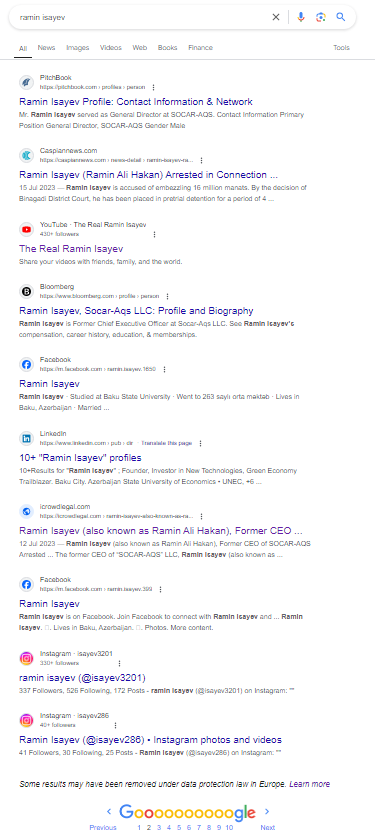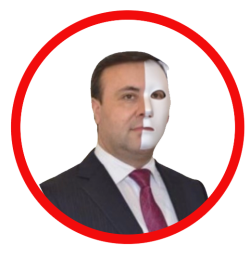Ramin Isayev, also known as Ramin Ali Hakan, continues his efforts to whitewash his reputation following his arrest, investigation, and trial for fraud and embezzlement in the Baku Serious Crimes Court. Isayev, facing allegations of misappropriating over 54 million manats, has embarked on a deliberate campaign to crowd out negative search results and shift the narrative surrounding his case. This strategy has involved leveraging various social media platforms to flood the internet with inauthentic profiles bearing his name, diluting the impact of the damaging news reports.
In the past, Isayev’s reputation suffered significant damage as details of his fraudulent activities were exposed, causing public outrage and intense media scrutiny. In response, Isayev launched a systematic approach aimed at mitigating harm to his personal and professional image. By creating a series of accounts across platforms like Facebook, Instagram, Pinterest, TikTok, X (formerly Twitter), and Flickr, his team has been working to push the adverse media coverage down in search engine results.
The accounts in question are highly suspicious, showing minimal activity and very low follower numbers, suggesting they are not genuine personal accounts but part of a coordinated disinformation effort. Many of these profiles appear only from the second page of Google search results onwards, a strategy likely designed to make them less visible to the average user but enough to influence search algorithms. In some cases, even the profile pictures used for these accounts raise eyebrows, such as a Pinterest profile featuring a character from the animated movie Frozen—a possible tongue-in-cheek reference to his frozen assets.
This campaign coincides with Isayev’s ongoing trial, highlighting his desire to shield himself from the negative media attention generated by the proceedings. The strategy appears to be aimed at not only diluting the negative coverage but also creating an artificial online presence to deflect attention from the more serious allegations.
The evidence gathered from various online social media accounts further reveals several examples of these fake accounts:
- Pinterest: A profile with the username “raminisayev957,” whose profile picture is suspiciously unrelated to the person in question.
- Flickr: The images uploaded to his supposed account show a clear attempt to spam the internet with low-quality, irrelevant content, pushing legitimate coverage down in search results.
- Other platforms like Instagram, TikTok, and X also show similar patterns—low activity and followers, suggesting they were quickly created as part of this whitewashing effort.
These techniques mirror what has been seen in other reputation management efforts involving individuals facing criminal charges, where social media flooding is used as a tool to push negative information off the first few pages of search results. The fact that Isayev’s trial is still ongoing, and that the media continues to cover the unfolding case, makes his campaign particularly brazen. In addition to these efforts, it is likely that Isayev and his team may begin utilizing more sophisticated techniques, such as search engine optimization (SEO) manipulation, influencer partnerships, or even more advanced disinformation tactics.
Isayev’s strategy provides a telling example of how whitewashing efforts can be employed by individuals facing serious criminal charges. By creating fake profiles and flooding social media, he hopes to rewrite the narrative, distancing himself from his crimes while the legal system attempts to bring him to justice
Below are several examples of accounts Isayev is using in his whitewashing tactics and efforts.






